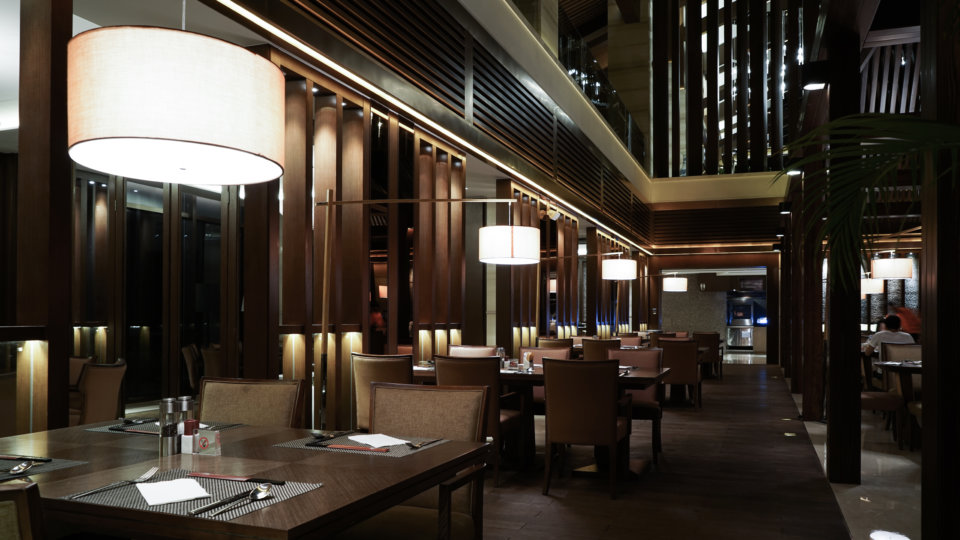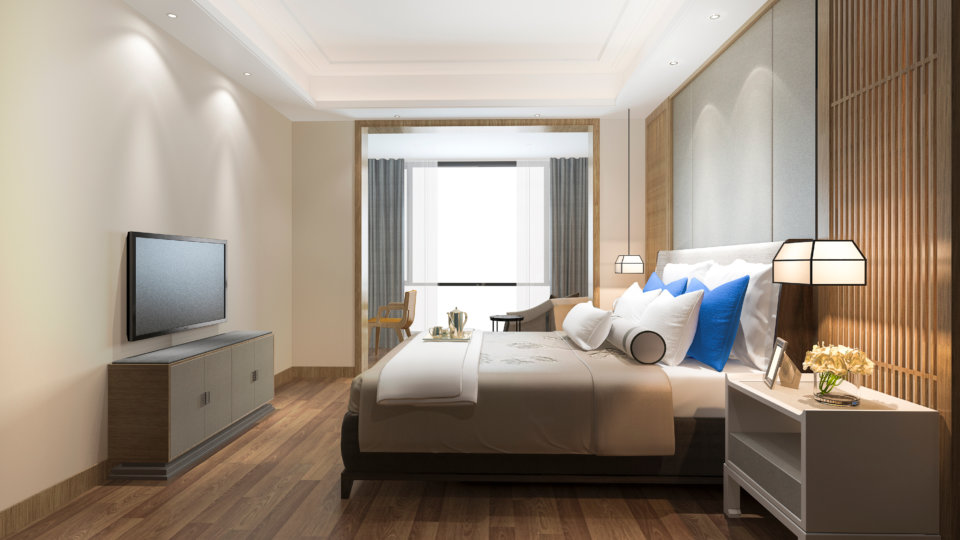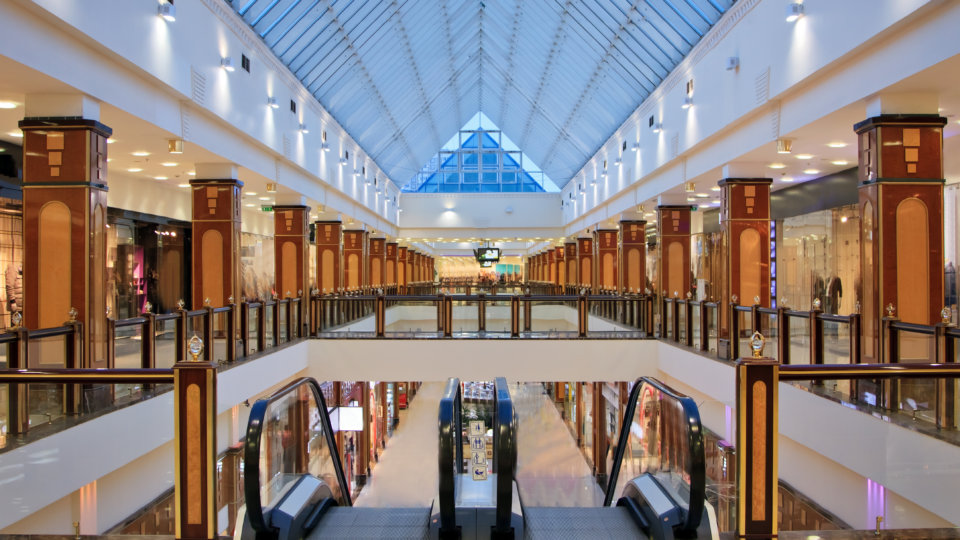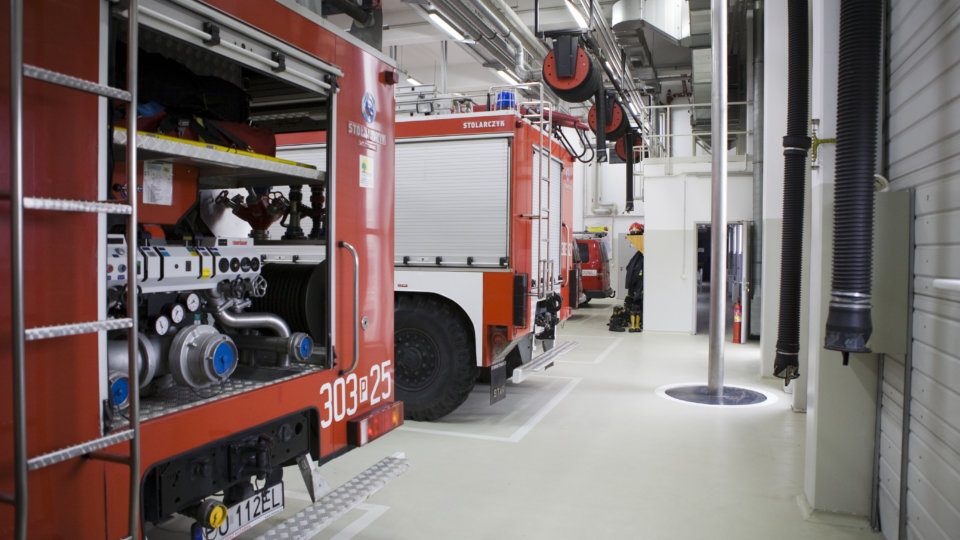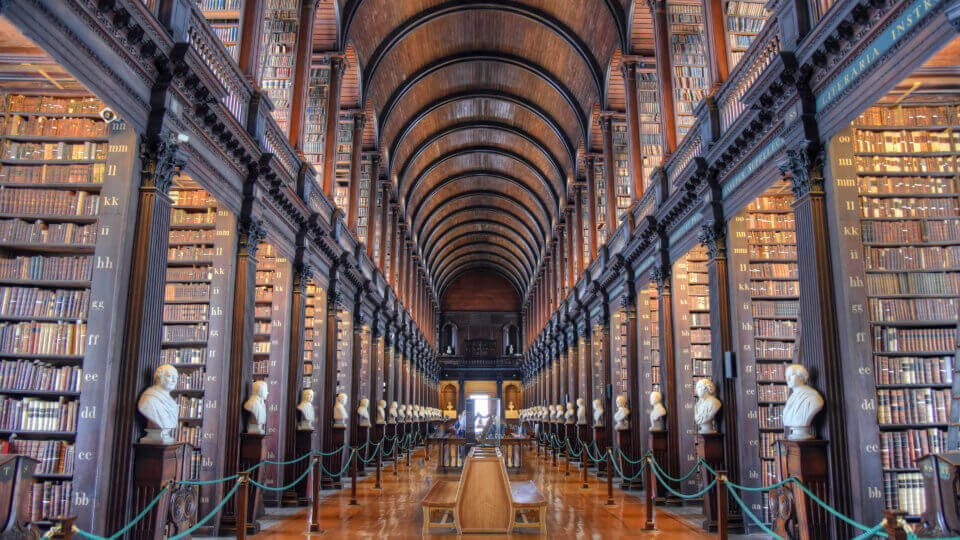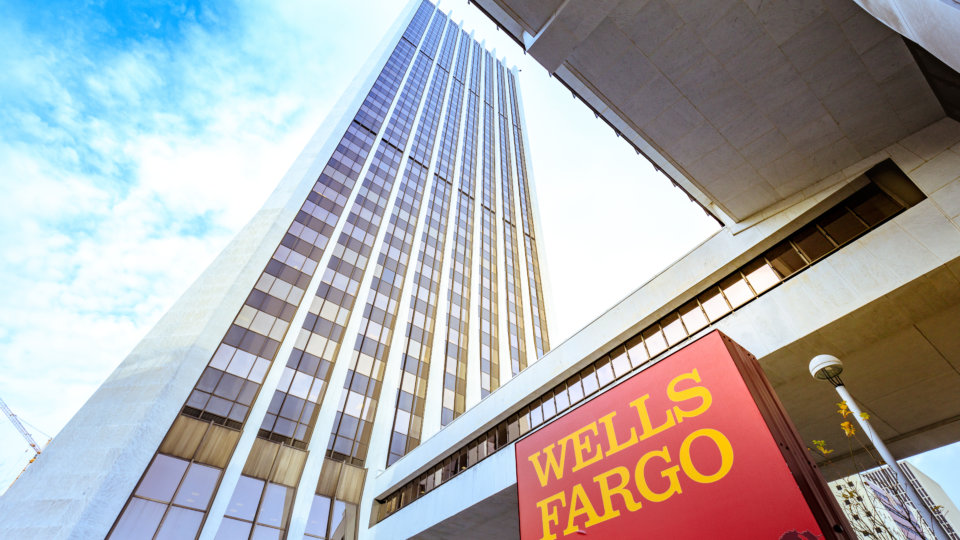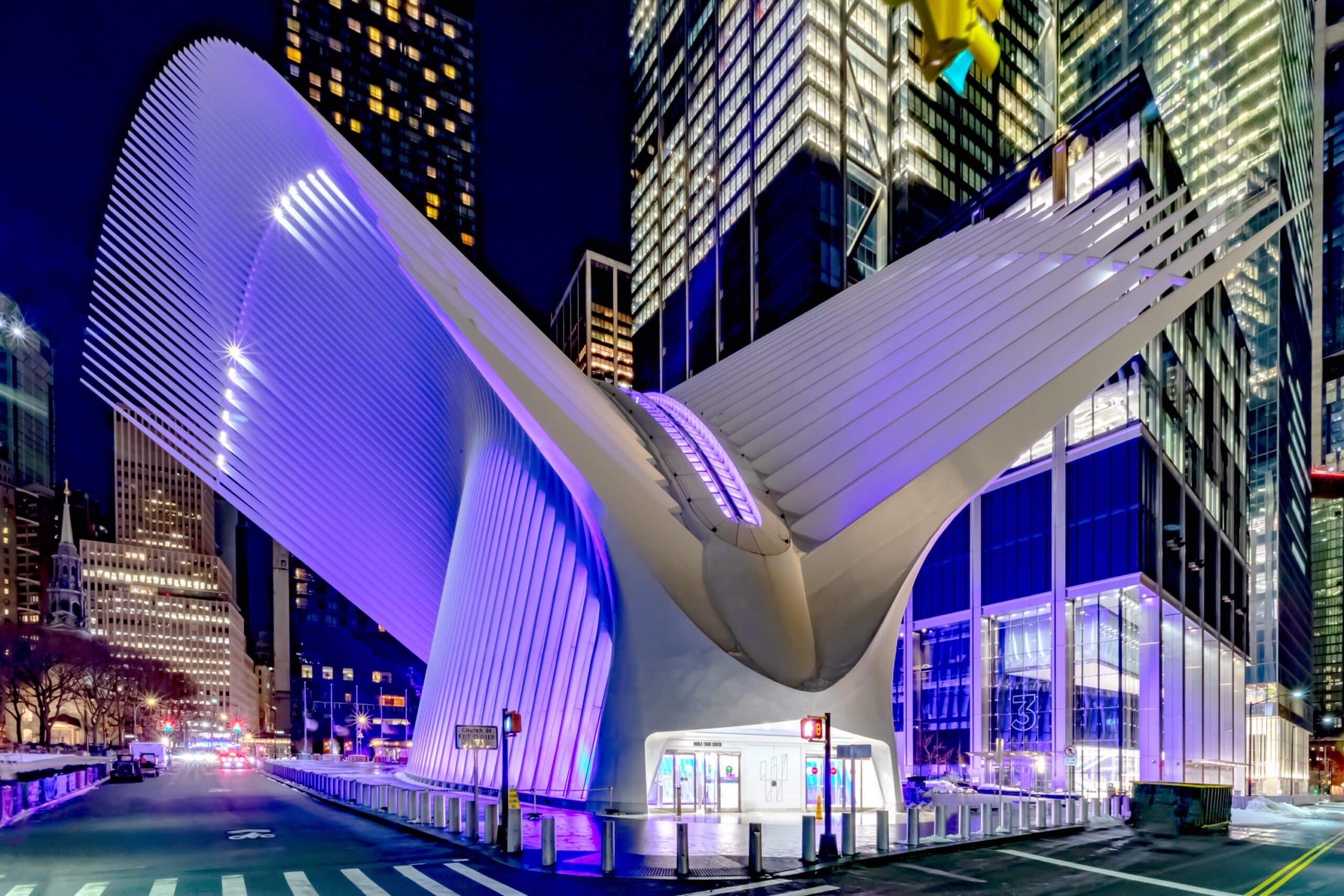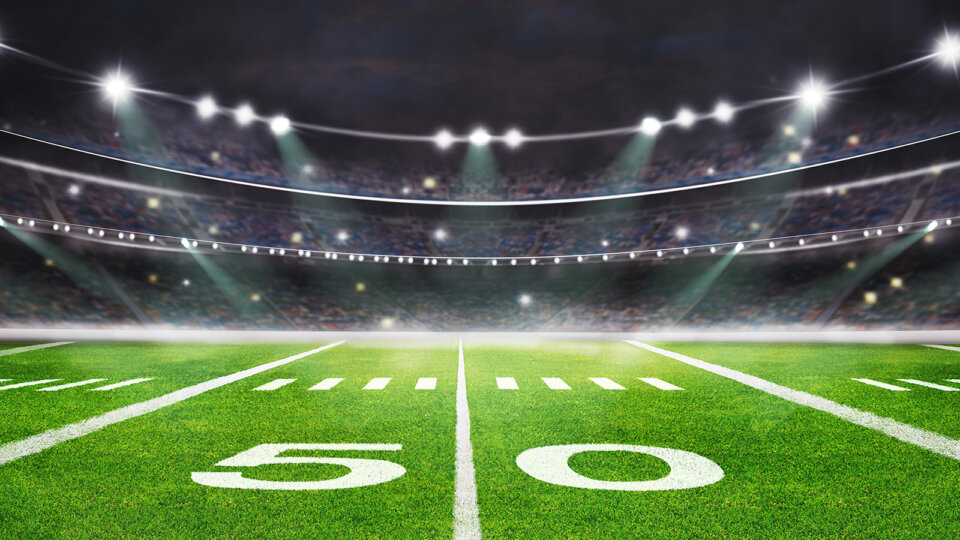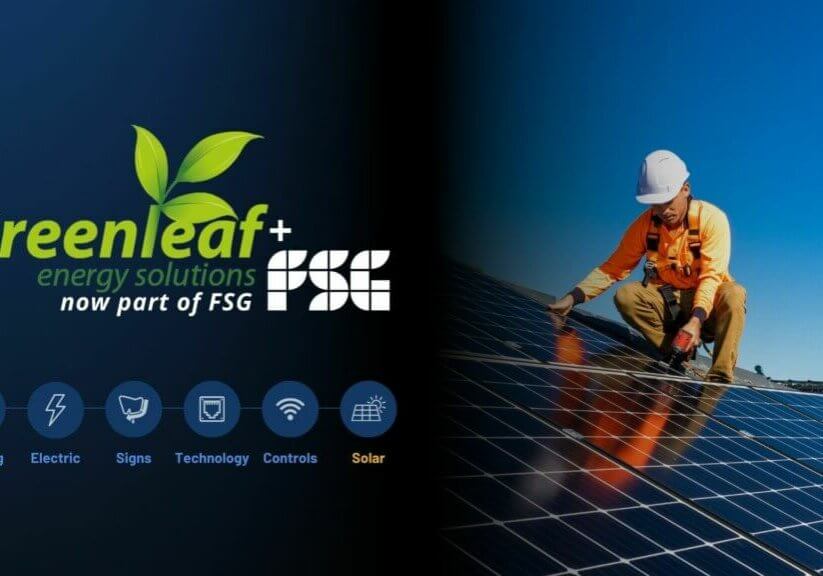Lighting and Controls That Deliver Your Goals
With this year’s MLB season in full swing, one thing is already clear for baseball fans: no matter who wins it all this season, it’s great to be back under the lights for America’s favorite pastime. There’s magic in the game, and there’s nothing like the experience of spending an evening at the ballpark.
Part of that thrill comes from the atmosphere of a Major League Baseball game. The crowds and mascots, the coaches and players, the vendors, the smells and the sounds of the game – no other event can match the feeling.
For many fans of baseball and other sports as well, that magic atmosphere begins and ends with the lighting. The vivid illumination that comes from dozens of high bay or pole-mounted stadium, arena, or gymnasium lights does more to create the unique atmosphere of a modern sporting event than anything else.
If you’ve ever hung around until the lights go out, you know what it feels like when the party is really over.
All of the Best Sports Lighting is LED
Just for a moment, let’s not discuss the fact that arenas and stadiums usually save 60-70% on energy costs when they switch to LED lighting. For now, let’s just talk about why LED lighting is the perfect sports lighting option for venues of all sizes hosting every type of indoor or outdoor event.
First off, LED light fixtures are not as fragile as legacy metal halide and mercury vapor units. Because LEDs are more rugged, they stand up to the elements better, and can even withstand the occasional foul ball.
Next, LED provides superior light quality, with fewer flickers and inconsistencies across an array of similar fixtures. Solid-state LED lighting provides consistent illumination exactly where it needs to be and nowhere else, with variable brightness and color options available for custom tuning.
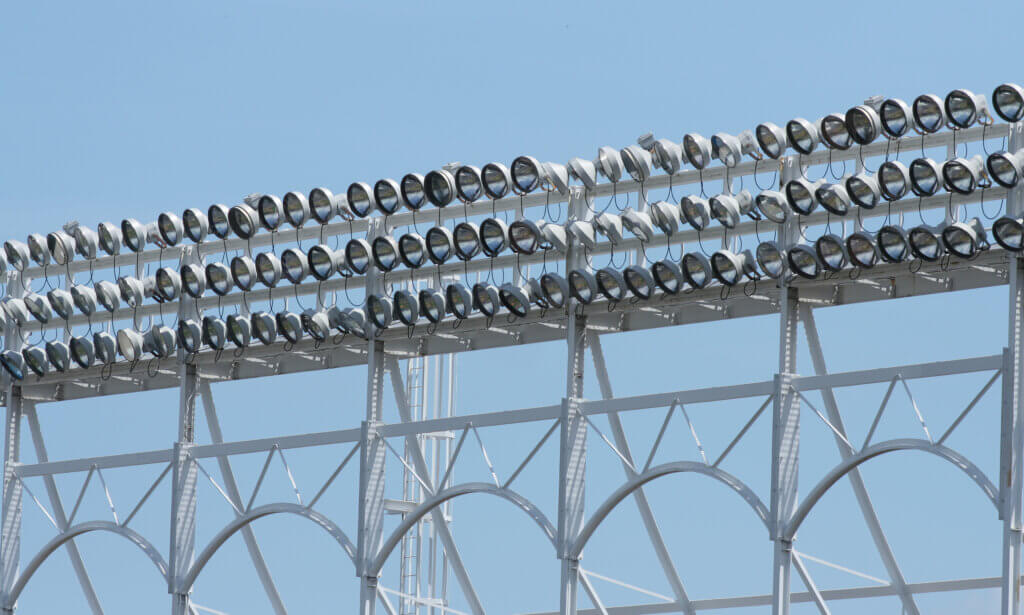
Source: iStock
For those responsible for maintaining the lighting at arenas and stadiums, the extended lifespan of LED lighting is a particular plus. After all, 50,000 hours is a really long time to not have to do something.
Finally, the 15- to 20-minute start-up times associated with legacy lighting technology really seem antiquated when compared to the instant on/off functionality of LED. This may be purely a psychological benefit, but how many times have you wondered during that warm-up period, “Are they going to make it all the way this time?”
As you can see, the benefits of LED lighting for sporting venues are obvious. So now let us talk about different types of sporting venues, and about how for every type of venue there’s an LED solution.
Lighting for Gymnasiums
Close your eyes and imagine the sound of squeaky sneakers on a hardwood floor. Maybe you hear cheerleaders or deafening horns blowing from time to time. You’re in a gymnasium.
Now open your eyes and try not to see those two high bay lights with burned-out bulbs. Don’t look at the one fixture over the home team’s bench that keeps flickering.
This gym needs LED lighting that suits the needs of the space. Gymnasiums typically require a large number of high bay lights, and the configuration of most gyms leads to dark corners and out-of-the-way places behind structural members or grandstands.
For some gymnasiums, LED strip lighting or wall pack lighting is a good idea to supplement the high bay lights and illuminate all the areas behind stages or within corridors.
An important note to remember about gymnasiums is that in some parts of the country at certain times of the year, the local gym can be uncomfortably hot. With HVAC systems straining to keep up with the load, cool LED lighting makes a dramatic difference in HVAC costs on top of the energy savings associated with the lights themselves.
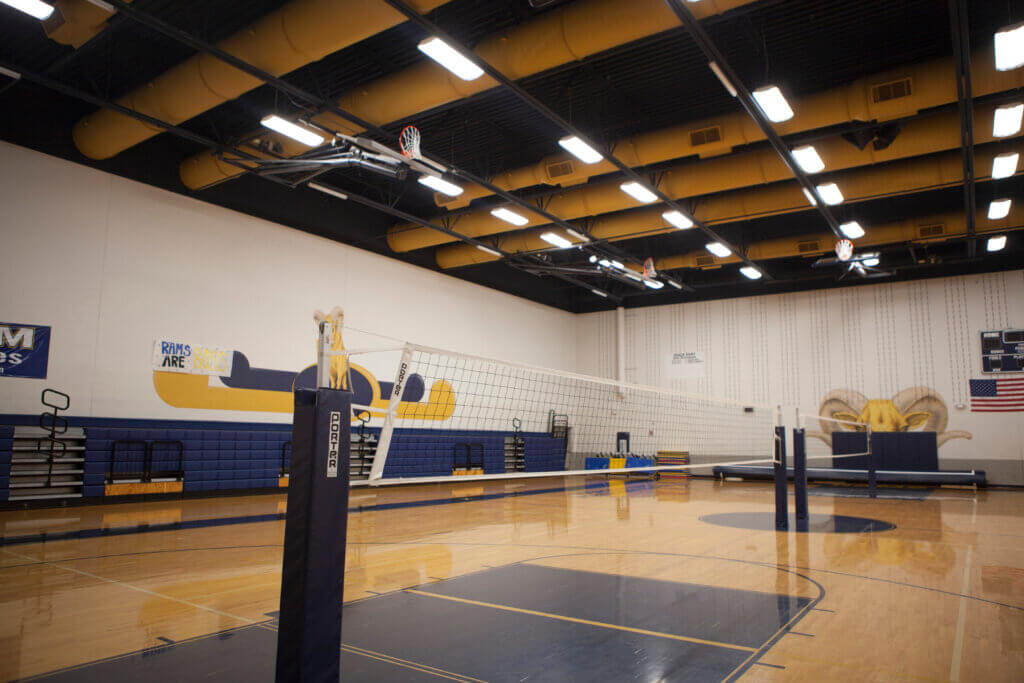
Source: FSG Media
Lighting for Other Indoor Sports Facilities
When we talk about gymnasiums, we are not just talking about the big barn-like structures where the local high school or college team dribbles and shoots. Other types of gyms need great lighting, too.
Athletic centers, fitness clubs, hockey rinks, equestrian centers, tennis courts, and racquetball courts all require great lighting to maximize the experience and promote safety for people who use the facility. (Heck, even putt-putt golf courses would benefit from some fantastic LED lighting.)
Gymnasium LED lighting can have a huge impact on player performance, and can dramatically improve the viewing experience for those watching the action. For facility owners who rely on subscription memberships, holding on to bad lighting is one way to watch your members walk out the door and never return.
When you talk to one of the lighting experts at FSG, you’ll find out about optimal light levels, color temperatures, preferred lighting distribution, mounting heights that deliver the best results, and even the shape of lighting fixtures that work best for your facility.
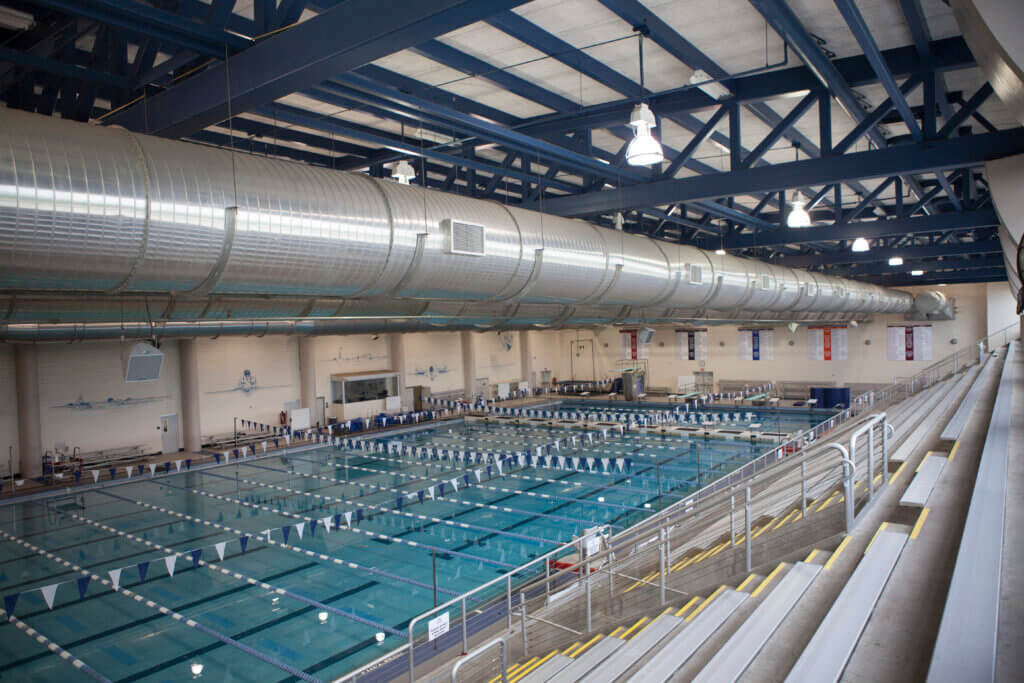
Source: FSG Media
Choosing the Right Light for Your Indoor Sports Facility
Most gyms require a combination of high- and low-ceiling lighting options. For large open spaces such as basketball courts, high bay LED lights deliver superior efficiency, low wattage usage, and illumination that is clear and bright.
Best of all, modern high bay lighting can be outfitted with motion sensors that automatically dim lighting levels after a preset amount of time has expired with no activity in the area.
For areas with lower ceilings, such as fitness centers or health clubs, high lumen output is not as important. In these areas, the emphasis shifts to sleek fixtures that complement the interior design and architecture of the space while delivering customized light temperatures at variable levels.
Lighting for Stadiums, Tennis Courts, and Outdoor Sports Fields
For most facility managers responsible for the operation and maintenance of stadiums and other outdoor sporting venues, lights and lighting maintenance have historically presented an ongoing, tedious chore. These folks carried keyrings that opened storerooms full of ladders, ballasts, and bulbs, and their office desks usually featured a Rolodex full of the names of expensive contractors that could come out on a moment’s notice.
As more and more outdoor facilities transition to LED, these sad days of neverending lighting maintenance are finally coming to an end. But before an outdoor sporting venue decides to flip the switch in favor of LED, what do they need to know about the different specifications for outdoor LED lights?
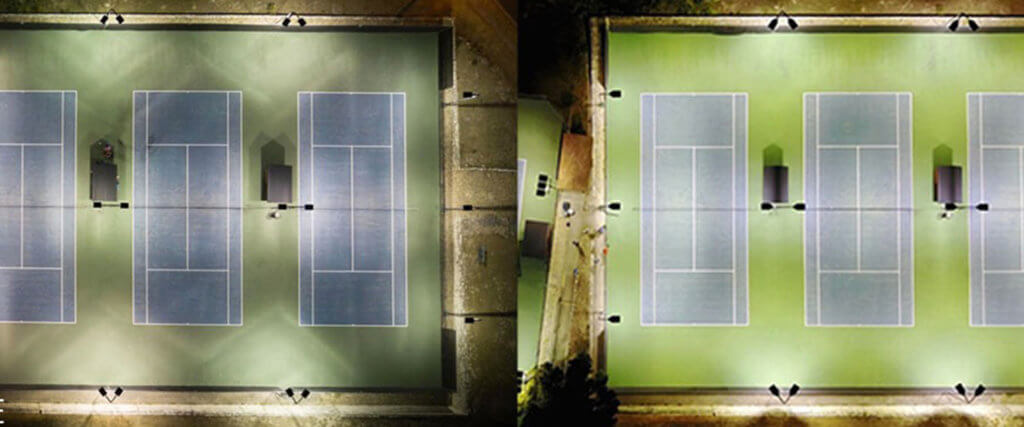
Source: FSG Media
After all, quality LED lighting supports more than just the game being played on the field. Great lighting leads to great video and photography, too, and supports broadcasts of events hosted at your site.
So, when choosing the right lighting for your outdoor venue, here are the most important considerations to keep in mind:
1. Wide Beam Angle
Stadium luminaires need to have a wide beam angle to cover a large surface area. The goal of proper stadium lighting design is to completely illuminate the entire playing field in a way that promotes player and spectator visibility.
2. High Color Rendering
Stadium luminaires that feature a high color rendering index value provide better clarity on the field and throughout the stadium, improving the experience for players and fans alike.
Video production and photography, in particular, benefit from the accurate color rendering provided by LED luminaires. The images just seem to “pop” more vividly when the venue features LED lighting.
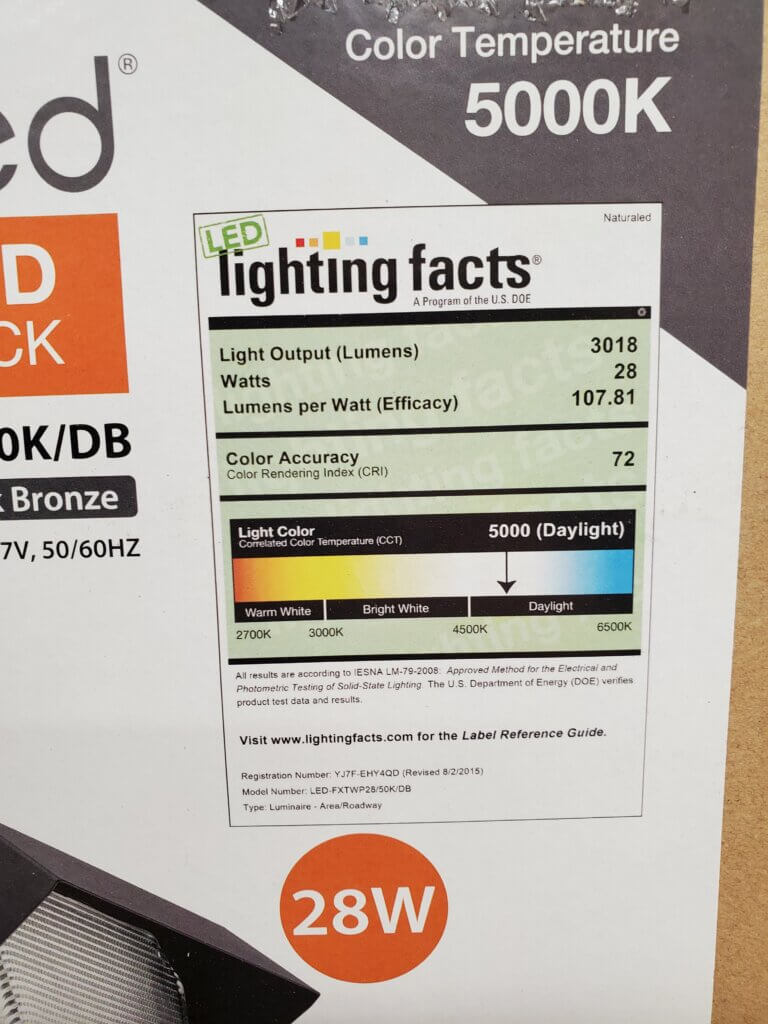
Source: FSG Media
3. Proper Horizontal and Vertical Illuminance Ratio
On the field of play, horizontal illuminance creates a stable visual “background” that serves to highlight different athletes and objects. Vertical illuminance refers to the amount of light falling on a vertical plane, in this case from the ground up.
For high-quality video production of a sporting event, and for the maximum spectator experience, lighting that delivers a proper ratio between horizontal and vertical illuminance is preferred.
4. Shadow Prevention
When stadium lighting comes from only one direction, shadows appear on the field. This is why ideal stadium lighting features light sources spaced evenly around the venue.
5. Glare Reduction
Nobody likes glare but in a stadium, nobody hates it more than the athletes on the field. Tied for second place are the spectators and camera operators trying to watch and record the game.
Glare reduction is a built-in advantage delivered by LED lighting. When compared to legacy lighting technologies, LED delivers eye-saving results and better experiences for everyone at the stadium.
6. Steady, Flicker-Free Lighting
Legacy lighting technology is often known for the flickering quality of the light provided. These flickers can distract players and fans alike and are especially challenging for photographers and videographers.
7. Overall Lighting Uniformity
In our high-definition age, we have grown accustomed to stunning images of incredible clarity. On the field of a sports stadium, this clarity is achieved when the proper lighting is applied with uniformity.
Players, fans, and all those working the event can clearly see every person or object on the field equally, with no “soft” areas or zones with compromised visibility.
Source: FSG Media
Pick Your Partner Wisely
At some sporting facilities, lighting upgrades are a big decision. Perhaps no one understands that more than an NFL team.
With stadiums that dwarf entire city blocks and host nearly 100,000 fans every week, NFL teams know both the costs and the opportunities that come with an extensive stadium lighting overhaul.
For sports facility owners with this much on the line, experience and reliability are paramount considerations. Lighting contractors are everywhere, but who do facility owners trust with mammoth lighting retrofit jobs at this scale?
FSG was selected as the lighting contractor on a project to design and install an LED lighting solution at NRG Stadium, home of the Houston Texans. With our years of experience in this industry, the resources of thousands of employees, and hundreds of subcontractors, FSG was the logical choice for the Houston Texans organization.
So you can see, the size of your sports lighting project will not be a problem for us. Whether you’re interested in re-lighting a high school football stadium or basketball arena, FSG is here for you.
Let’s Not Forget About Safety
Whether we are talking about athletes, spectators, or employees working at an event, consistent, well-designed lighting is crucial to the safety of everyone in attendance. With rugged, dependable LED lighting, this safety is more assured.
Also, remember that serious athletes are often famous for their superhuman abilities to run, jump, and leap. Those athletes’ grandparents or toddler children, on the other hand, might struggle with the steps and ramps found in most sporting venues.
All facility owners understand the importance of safety for the customers who visit their venues. As such, excellent LED lighting is a must when providing the peak level of prevention that helps spectators and venue employees avoid trips and falls.
FSG – The First-Round Pick for Sports Lighting
For new facility construction, and especially for existing facility lighting retrofits, FSG is the star player for your team. At branches located across the country, FSG has the lighting designers, the products, the technicians, and the follow-through your next sports lighting project needs most.
Your one-call turnkey solution begins when you reach out to FSG about the challenges you are having with your current stadium, arena, gymnasium, or mixed-use athletic facility lighting. In every market we serve and regardless of the specific type of lighting project we undertake, FSG always provides One Service: we deliver lasting value to our customers.
If all you have is a question about the lighting at a sports venue you operate or manage, we encourage you to visit our website or call us at (877) 293-6689. When you do, we will guide you through your options and help you make a plan that accurately addresses your particular lighting needs.

